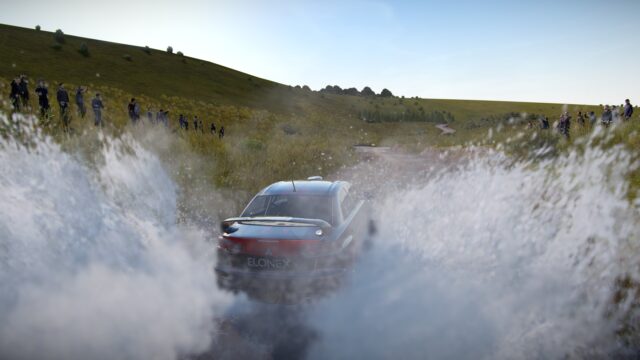Need for Speed: The Run Review

In the prologue level of the game Need for Speed: The Run, the situation in which our main character, Jack, finds himself is outlined: a guy neck-deep in trouble, surrounded by bad guys, and desperate to find a way out. The solution for him becomes participating in off-road races with a prize fund of 25 million dollars. But truly, The Run begins in a warehouse garage somewhere around the Embarcadero area in San Francisco. You jump into a car and speed out onto the street, heading towards the first rays of dawn. Perhaps it’s not very noticeable, but the developer, Black Box, does a good job of conveying the feeling of the streets of San Francisco. And then, in the best traditions of the genre, chaos ensues around you: police cars chase you, in quantities that San Francisco can hardly boast of in reality, and a dozen more cars block the way to the Golden Gate Bridge, and…
Impressive. Need for Speed: The Run started so energetically that it was only after 45 minutes that I began to realize that the game I was playing wasn’t actually that good.
It takes so much time to come to this realization because the fundamentals of the game are actually quite good. It’s fun to drive the cars in Need for Speed: The Run. They handle well, sound good (let’s not talk about the terrible audio compression for now), and they’re fast. The latter is especially good, as The Run wants you to drive fast. Very, very fast. Perhaps faster than your mom would allow.

Cutting angles
And with an increase in speed, the troubles begin. I know that The Run requires me to drive fast. It’s obvious when all the cars in front of you are going at around 150 miles per hour. If you want to make it, you have to drive like… well, like you’re the last bastard. You just have to drive as if you’re the last bastard. I’ve had to cut corners, turn in forbidden places, and crash into other cars in most races just to have a chance at winning. All of this doesn’t really match the level design in The Run.
Unfortunately, the solid foundation of Need For Speed: The Run is undermined by strange gameplay decisions that successfully kill most of the fun. And the first killer is the new driver progression levels. At the beginning of the game, you can’t boost the engine, you have to unlock that ability. And I can almost understand that, because nitrous oxide doesn’t come with the car. But at level seven of Need For Speed: The Run, you unlock the greatest perk you could dream of – the laws of physics. Until level seven, you can’t draft behind other cars. And at the same time, starting from the second race, you can suddenly burst ahead, leaving all competitors behind.
There’s also no feeling that there are drivers behind the wheel of the opponent’s cars, rather it feels like they are toy cars that drive the same path every time you try to participate in a race. I say “try” because you will crash in the game. Often. And here you will encounter probably the most poorly thought-out “retry” feature in the history of games.
Retry in The Run is not at all what you imagine. You are shown a black screen with a big “Retry” sign, and after 5-20 seconds (!) you are returned to the race one or two miles back. That’s the checkpoint system. A bad system.
The game also has a strange, intrusive paranoia about leaving the track. If you deviate from the track by more than two meters, the screen immediately becomes dark and you are offered to “Retry”. Sometimes the conditions become even stricter. The game demands risky driving to win, but at the same time, it is ready to punish the player for it. Instead of introducing new ways to overcome the track, the game essentially hinders the player from playing.

Run away from here!
The races themselves do not save the situation. The level design in The Run is usually quite dull and often illogical. In one of the scenes closer to the end of the game, you are escaping from a train in the subway at a speed of about 140 miles per hour and there is really nowhere to hide from it. Again, police cars are capable of defying the laws of physics at their own will, overtaking you and screeching to a halt from 160 miles per hour to zero in less than a second. However, an even greater threat to your life will be the elements of the environment. And if The Run doesn’t try to kill you directly, it will certainly tie your hands when something in the game explodes and drops the frame rate, and you make a control mistake.
As for the story, it’s nothing special. I have nothing against narrative inserts. They serve their purpose and in principle improve the impression after all the other disappointing aspects of the game. But the characters do not develop, and the story exists solely to somehow explain the completely ridiculous racing situations.
There is also a rather unremarkable multiplayer and a higher difficulty mode in Need for Speed: The Run. The multiplayer is even more like a car attraction. And the restart feature is borrowed from Need For Speed: Hot Pursuit. So you can get back into the game faster and get less annoyed, but the same dull design is not inspiring. The races in the higher difficulty mode do not differ in any special way from the single-player game.
Overall, the biggest problem with Need For Speed: The Run is its excessive resemblance to a real trip across the United States of America. Yes, there are entertaining and vibrant moments along the way, but for the most part, the journey is full of unexpected stops, punctured tires, and asshole drivers. It’s not the worst part of Need For Speed, but it shouldn’t be compared to other, better racing games of the past year.
Share
Discuss
More Reviews





